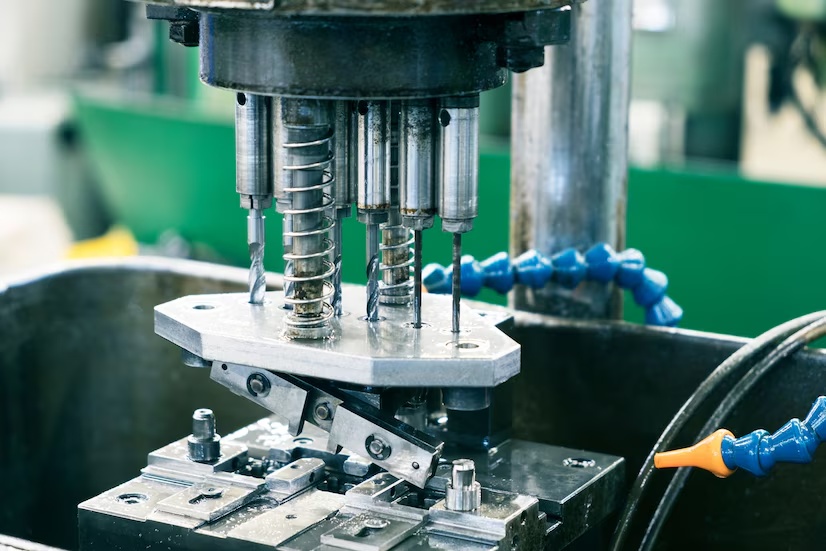Plastic has become a ubiquitous material in our lives, and injection molding reigns supreme as the process that transforms raw plastic pellets into a vast array of functional and precise parts. From the intricate components within your smartphone to the sturdy chair you’re sitting on, injection molding plays a crucial role in shaping the world around us. But what makes this technique so advantageous for part manufacturing? Let’s delve into the key benefits that make injection molding a preferred choice for a wide range of applications.
1. High Production Rates and Efficiency:
Injection molding China excels at churning out large volumes of identical parts quickly and efficiently. The automation of the process, coupled with short cycle times (the time it takes to complete a single molding cycle), allows for mass production at a rapid pace. This makes it ideal for applications requiring millions of identical parts, such as bottle caps, medical syringes, or electronic components.
Imagine a scenario where you need ten million bottle caps. Traditional manufacturing methods might struggle to achieve this volume efficiently. Injection molding, on the other hand, thrives in such high-volume scenarios. The process is like a well-oiled machine, with each cycle seamlessly producing a new part, minimizing downtime, and maximizing output.
2. Design Flexibility and Complexity:
One of the significant advantages of China die casting is its ability to create complex shapes with intricate details. Unlike subtractive manufacturing methods like CNC machining, where the material is removed to create the desired shape, injection molding utilizes precisely designed molds. This allows for the creation of features like undercuts, internal ribs, and even threads directly within the molded part. This design freedom opens doors for innovative and functionally complex parts that might be difficult or expensive to produce using other techniques.
Think of a gear with intricate teeth or a medical device with internal channels. Injection molding can create these features directly within the mold cavity, eliminating the need for additional complex machining steps.
3. Tight Tolerances and Consistent Quality:
Injection molding allows for precise control over part dimensions, resulting in consistent and high-quality products. The use of robust molds and precisely controlled parameters ensures that each molded part adheres to tight tolerances. This is crucial for applications where parts need to fit together seamlessly or function with high accuracy. For instance, medical devices and automotive components demand precise dimensions to ensure proper functionality and safety. Injection molding delivers this consistency, ensuring each part meets the required specifications.
4. Material Versatility:
A wide range of thermoplastics and even some thermosetting materials can be used in injection molding. The choice of material depends on the desired properties of the finished part, such as strength, heat resistance, or chemical compatibility. This material versatility allows for tailoring the parts to meet the specific needs of the application. Need a lightweight yet durable bottle cap? Polypropylene might be the answer. Looking for a flame-retardant material for an electrical component? Consider using Polycarbonate. Injection molding offers a material for almost any requirement.
5. Cost-Effectiveness (for High Volume):
While the initial investment in mold development and creation can be high, for high-volume production runs, injection molding becomes a cost-effective solution. The efficiency of the process, minimal material waste, and ability to produce consistent parts all contribute to lower per-unit costs. As millions of identical parts are churned out, the initial mold investment is spread across a larger production volume, ultimately reducing the cost per part.
6. Repeatability and Consistency:
Once a mold is designed and optimized, injection molding allows for the continuous production of identical parts. This consistency is vital for applications where parts need to function flawlessly across large quantities. Imagine needing a million identical syringes for a medical application. Injection molding ensures each syringe is produced with the same level of precision and functionality, guaranteeing consistent performance.
Additional Advantages:
Injection molding can achieve a variety of surface finishes, depending on the mold surface texture and the chosen material. A high-gloss finish might be achievable for certain applications.
The injection molding process itself is highly automated, minimizing the need for manual intervention and ensuring consistent quality.
In Conclusion Injection Molding: Not a One-Size-Fits-All Solution
While offering a multitude of advantages, it’s important to acknowledge that injection molding might not be the perfect fit for every project. Here are some factors to consider:
Production Volume: For low-volume production runs, the initial mold development cost might outweigh the benefits.
Part Complexity: Extremely complex parts might pose challenges in terms of mold design and material flow.
Also Read:-
- Is It Safe To Use Manganato?
- Is Paper A Good Career Path?
- The Importance of Injury Analysis in Predicting Team and Player Performance

